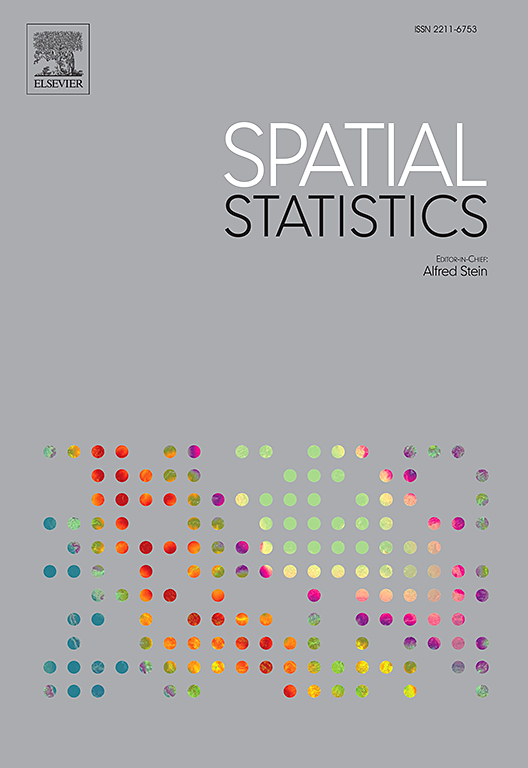Spatial and spatio-temporal cluster detection using stacking
IF 2.5
2区 数学
Q3 GEOSCIENCES, MULTIDISCIPLINARY
引用次数: 0
Abstract
Patterns in disease across space and time are important to epidemiologists and health professionals because they may indicate underlying elevated disease risk. In some cases, elevated risk may be driven by environmental exposures, infectious diseases or other factors where timely public health interventions are important. The spatial and spatio-temporal scan statistics identify a single most likely cluster or equivalently select a single correct model. We instead consider an ensemble of single cluster models. We use stacking, a model-averaging technique, to combine relative risk estimates from all of the single cluster models into a sequence of meta-models indexed by the effective number of parameters/clusters. The number of parameters/spatio-temporal clusters is chosen using information criteria. A simulation study is conducted to demonstrate the statistical properties of the stacking method. The method is illustrated using a dataset of female breast cancer incidence data at the municipality level in Japan.
基于叠加的时空聚类检测
跨空间和时间的疾病模式对流行病学家和卫生专业人员很重要,因为它们可能表明潜在的疾病风险升高。在某些情况下,风险升高可能是由环境暴露、传染病或及时的公共卫生干预很重要的其他因素造成的。空间和时空扫描统计信息确定一个最可能的集群或选择一个正确的模型。我们转而考虑单个集群模型的集合。我们使用叠加,一种模型平均技术,将所有单个聚类模型的相对风险估计合并到由参数/聚类的有效数量索引的元模型序列中。使用信息标准选择参数/时空聚类的数量。通过仿真研究验证了该方法的统计特性。该方法使用日本市级女性乳腺癌发病率数据集进行说明。
本文章由计算机程序翻译,如有差异,请以英文原文为准。
求助全文
约1分钟内获得全文
求助全文
来源期刊

Spatial Statistics
GEOSCIENCES, MULTIDISCIPLINARY-MATHEMATICS, INTERDISCIPLINARY APPLICATIONS
CiteScore
4.00
自引率
21.70%
发文量
89
审稿时长
55 days
期刊介绍:
Spatial Statistics publishes articles on the theory and application of spatial and spatio-temporal statistics. It favours manuscripts that present theory generated by new applications, or in which new theory is applied to an important practical case. A purely theoretical study will only rarely be accepted. Pure case studies without methodological development are not acceptable for publication.
Spatial statistics concerns the quantitative analysis of spatial and spatio-temporal data, including their statistical dependencies, accuracy and uncertainties. Methodology for spatial statistics is typically found in probability theory, stochastic modelling and mathematical statistics as well as in information science. Spatial statistics is used in mapping, assessing spatial data quality, sampling design optimisation, modelling of dependence structures, and drawing of valid inference from a limited set of spatio-temporal data.
 求助内容:
求助内容: 应助结果提醒方式:
应助结果提醒方式:


